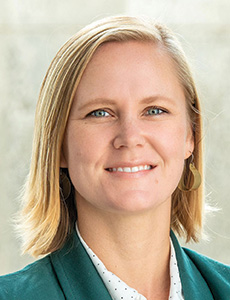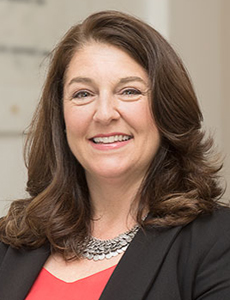The Vermont Captive Insurance Domicile Celebrates 40 Years of Success

The state of Vermont has reached a significant milestone in its development.
This year marks 40 years since its legislature passed the Special Insurer Act of 1981, enabling businesses to form captive insurance companies in the state.
The first captive, First Charter Insurance Company, was formed by tire manufacturer B.F. Goodrich Company in September that year and the rest, as they say, is history.
As the leading U.S. captive domicile and the third largest domicile in the world, Vermont has almost 600 active captives, including more than 300 cells, with $25.4 billion in gross written premium and $212 billion in assets under management.
It also has eight different captive types, ranging from single parents, risk retention groups and sponsored captives to association, branch and agency captives. Most recently, Vermont became the first state to license affiliated reinsurance companies (ARCs), allowing companies to reduce the tax they incur under the Base Erosion Anti Abuse Tax.
The motivating force behind Vermont establishing itself as a captive domicile was the insurance industry’s need for a viable onshore alternative. Richard Snelling, the governor of Vermont at the time, along with other leaders, looked to Switzerland, a small European country that had built a successful financial services industry, and decided to adopt a similar model. That same year, the state legislature wrote the Special Insurer Act into law.
“Captive insurance in Vermont was initially touted as a way to create jobs, tax revenue and additional tourism revenue,” said David Provost, deputy commissioner, captive insurance at the State of Vermont. “Thankfully, we got into the business early enough to create a niche for ourselves. Now we are a world leader in captive insurance.”
The Perfect Storm
Vermont really took off as a captive domicile in 1986 with the perfect storm of a hard market, tax reform and the Risk Retention Act. Thanks to the collaborative efforts of lawmakers, regulators, service providers and the captive industry to grow the business, the state has put itself firmly on the map.

Dave Provost, deputy commissioner, captive insurance, State of Vermont
“Consistency has been our focus over the last 40 years,” said Sandy Bigglestone, director of captive insurance at the State of Vermont.
“We have remained flexible in the face of ever-changing market needs while continuing to attract quality business and talent and maintain our robust regulatory framework and gold standard at the same time.”
The key to all this has been Vermont continually seeking to evolve and improve itself as a domicile.
“We are continually striving for consistency of excellence,” said Provost. “That means listening to the industry and working with them to ensure that they can achieve the best outcomes.”
Among Vermont’s biggest achievements, said Bigglestone, has been establishing itself as a truly global player. Behind this drive has been the state’s reputation as a center of excellence, she said.
“Our infrastructure has really been the cornerstone upon which we have built this reputation,” said Bigglestone.
“That is down to the specialist captive management teams of lawyers, actuaries, auditors, bankers, investment managers and other service providers that make up our community here, as well as the trade industry body, the Vermont Captive Insurance Association (VCIA), the legislature and regulators.”
Indeed, the formation of the VCIA itself, the world’s largest captive insurance association, along with the International Center for Captive Insurance Education, has helped to pave the way for the state to build on its early successes.
Another pivotal factor, he said, has been Vermont’s accreditation with the National Association of Insurance Commissioners.
“They have all been key drivers in keeping the industry at the forefront,” said Provost. “This is borne out by the fact that every year we go to the legislature and work with the VCIA to modify and improve upon our captive laws to ensure that we remain a market leader.”
Vermont’s annual captive legislation and unparalleled level of government backing have helped to set it apart from rival jurisdictions.
“That enables us to take a far more proactive approach to improving ourselves as a domicile,” said Brittany Nevins, captive insurance economic development director at the State of Vermont.
“It also allows us to remain on the cutting edge without compromising the quality and standard of regulatory supervision.”
Big Milestones
A significant milestone in Vermont’s 40-year history was the enaction in May 1999 of a new law enabling the formation of protected cell captives — a rental structure that separates an insured’s assets and liabilities from other participants.
Since then, uptake has soared, with more than 300 protected cells now registered in the state.

Brittany Nevins, captive insurance economic development director, State of Vermont
A decade later, Vermont introduced legislation allowing special purpose financial insurance companies — a vehicle used to enable risk securitization transactions to fund its obligations under a reinsurance contract with a ceding insurer — to be established.
It licensed its first one, Northwind Reinsurance Company, in October 2007. A law enabling the formation of agency captives — a reinsurance company controlled by an insurance agency or brokerage firm — was then passed in 2017. A year later, in May 2018, Vermont licensed ARCs, with Mapfre Re Vermont Corporation, the first one to be established.
“Throughout Vermont’s evolution, we have consistently been developing laws for the creation of new captive structures and continually refining them so that they remain relevant to the industry,” said Nevins. “That can only be done by listening to and meeting the industry’s needs to fill these gaps in the market.”
However, to get to that stage, every new concept has first to undergo rigorous scrutiny by the regulators. Only then can it be presented to the legislature.
“Because we don’t want to do anything that would jeopardize our gold standard, we always adopt a cautious approach,” said Bigglestone.
“That said, we remain open-minded and receptive to new ideas that will benefit the industry, as in the case of ARCs and special purpose financial insurance companies, to name a few.”
Despite the captive industry creating more than 400 direct, high paying jobs in Vermont, the state has always suffered from a talent shortage.
Previously, that stemmed from the industry’s early growth, which has accelerated in recent years.
“The constant challenge for us has been the struggle for talent,” said Provost. “In order to keep moving forward, we need to find those skilled people to work in government, and the captive management teams and service providers.”
Part of the solution is raising awareness of the benefits of working in the thriving captive insurance space. Those who join the industry tend to stay.
“One of the biggest factors behind Vermont’s success has been the longevity of its people,” said Provost.
Recruitment and marketing will remain the key priorities for Vermont moving forward. That includes targeting key markets in Europe and Latin America.
“A great example of reaching out to international markets is a recent webinar we held with delegates from Mexico,” said Nevins. “In the postpandemic era, we need to continue focusing on these areas in promoting Vermont as a go-to captive domicile.”
Another challenge that Vermont has managed to turn into a positive has been the COVID-19 pandemic. It struck just when industry and the regulators were in the midst of working through the annual captive insurance bill.
“We just adapted and did everything virtually, giving testimonies by video link,” said Provost.
“In the same way, we held preliminary meetings with new business prospects and even developed our own electronic license to replace the paper one.”
Collaborative Benefits
Richard Smith, president of the VCIA, said Vermont’s success as a captive domicile comes down to two key factors: government support for the industry and captive insurance’s importance as an economic driver. That is backed up by having a strong regulator, he said.

Sandy Bigglestone, director of captive insurance, State of Vermont
“That level of support has been consistent across the board, from the governor and state legislature through to the regulator,” said Smith.
“Additionally, Vermont is a relatively small state, so captive insurance as an industry is hugely significant, both in terms of tax revenue and employment.”
Many states have eyed Vermont’s success and tried to emulate it with their own captive insurance laws. But Vermont has remained the leader thanks to collaboration between the different parties.
“The saying goes that they literally photocopied Vermont’s captive laws and just added their state name at the top,” Smith said. “There were stories of punctuation errors in Vermont’s original law that they failed to pick up suddenly appearing across 35-plus state laws.”
The VCIA was established in 1985. Working in partnership with regulators and policymakers, it lobbies on behalf of its almost 500 members at both state and federal levels.
“An example of this is, every year the state’s Department of Financial Regulation and the VCIA work together to modify Vermont’s captive statutes for legislature review and approval,” said Smith. “We need to ensure that the changes make sense, are in the right language and will benefit both the state and industry.”
Looking ahead, Smith believes that Vermont’s future success hinges on its flexibility and innovation.
An example of this, he said, is the creation of a new dormant status for captives, which allows owners who have stopped using the captive to retain their license in case they decide to resume it again in the future without having to pay taxes while it remains unused.
“Vermont needs to be on top of these kinds of changes and be ready to make them when required, whether statutory or regulatory,” said Smith.
A Natural Fit
Andrew Baillie, program director, global insurance at The AES Corporation, a global power and utility firm, which has two captives in Vermont, said the company chose the state as its domicile because of its service support and infrastructure.
“Having all that in place was a big positive for us,” said Baillie. “We have always found that when you talk with the regulators about matters, such as business plan changes, they are very well informed and knowledgeable in the level of scrutiny and advice they give you.”
AES’s first captive, established in Vermont in 2003, predominantly writes property and business interruption coverage as well as terrorism and cyber for an asset base in excess of $50 million. Its second captive, first registered in 1987, was acquired when it bought another U.S. utility 10 years ago, and its focus is on property, casualty and financial lines.
Vermont was a natural fit for AES, which is based in Arlington, Virginia because its close and in the same time zone, making it convenient for meetings with service providers and regulators.
Another key advantage is the quick turnaround time, he said.
“We find that they always give us valuable feedback in a timely manner,” said Baillie. “That’s what you want from your regulator — one that gives you strong and clear direction.”
Vermont’s formula has clearly worked in terms of realizing those early ambitions over last 40 years. How it continues to evolve, however, will be fascinating to watch over the next 40. &











